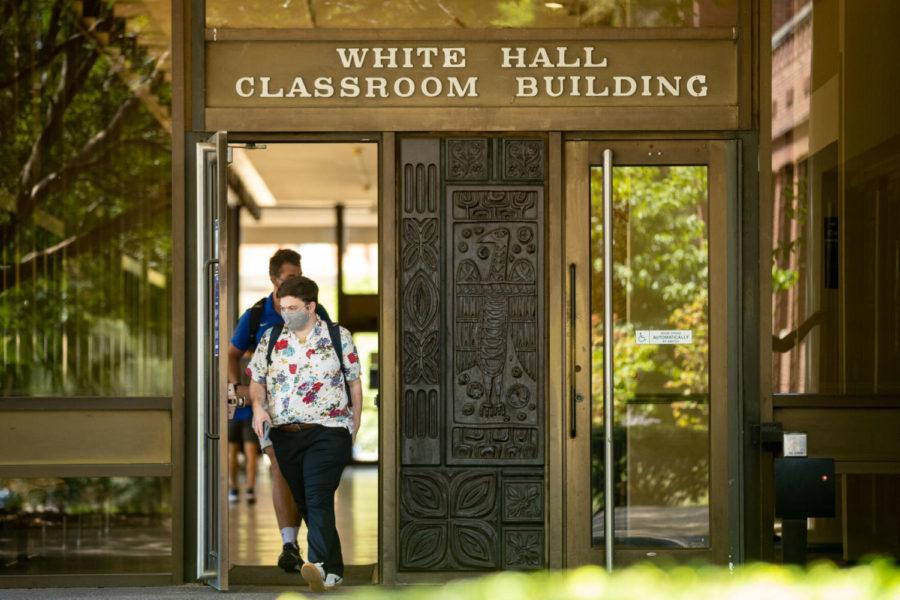‘Life is hard’: Students, professors adjust learning to pandemic stressors
November 30, 2020
Higher education was tested in ways it has never been tested before during the COVID-19 pandemic.
As administrations and universities tried to adapt large-scale operations and campuses to accommodate safety guidelines, day-to-day adjustments have fallen on professors and students who are dealing with the immediate challenges of learning during an often-stressful semester.
Many students have ended up suffering in a variety of ways at the University of Kentucky.
Therese Smith is the director of the Center for Support and Intervention, an office at UK that handles non-clinical student cases, such as a student facing a food or housing shortage and other standard of living issues.
According to Smith, the number of students needing such assistance has increased since the spring of 2020 compared to the same time in 2019.
In May of 2019, there were 34 cases handled by the CSI. In May of 2020 there were 404 cases brought to CSI, a more than 1000 percent increase from the previous year.
The nature of the cases is shifting as well, with more and more students struggling to cope with the economic fallout of the pandemic.
In the eight months prior to the pandemic – from July of 2019 to March 14, 2020 (the day after UK ceased all in-person instruction in the spring) – 16 percent of CSI’s total cases concerned students’ basic needs.
That percentage quadrupled over the early months of the pandemic; starting March 15, 2020 until June 30, 2020, 67 percent of all cases were concerning students’ basic needs.
“Often times students feel so overwhelmed they don’t know where to start. Come to my office, and we’ll walk you through where you can go,” Smith said.
UK students expressed frustration that they did not qualify for the first round of stimulus checks; many college students are still claimed on their parents’ taxes, making them ineligible for the COVID relief bill. Other students were affected by shutdowns that took away jobs in service industries.
Professors across colleges have likewise expressed concerns for students during the pandemic. Of the many struggles that students deal with during this time, technological issues pose some of the largest threats to learning.
“There’s certainly some disparities in terms of access to technology. I have students who attend the class I’m doing right now on their phone,” said Nathan Vanderford, a professor in the university’s College of Medicine.
These complications apply to professors like Vanderford just as much as they do to students.
“My family and I struggled from March until July under our internet provider,” Vanderford said. “My wife is a faculty member too, and I have two small kids who were trying to do their school. There were times when our internet just would not work.”
David Stephenson, a professor in the university’s School of Journalism and Media, said he had to become more flexible with grading this semester to help students who struggled with these issues.
“If I was maintaining the same level of strictness as I had in previous years, grades would be lower, because people are turning things in later and they’re not attending as much,” Stephenson said.
Attendance seems to be a problem in many classes this semester, which makes both lesson planning and learning that much harder.
Brent Seales, a professor in UK’s College of Engineering, said only 20 percent of students in his in-person class showed up regularly.
“It is difficult to teach under these circumstances. My in-person class has a regular attendance of eight to 10. Because of the need to accommodate testing and quarantine, I did not require attendance, which has left me with almost no one in the classroom,” Seales said.
Seales and many other like-minded professors recognize their students’ need to stay home after this semester and are planning to move their currently in-person classes entirely online. However, not all of them believe that is a good thing in the long run.
“If professors like me move permanently to an online mode of instruction, however, I believe it will change the experience that a residential university intends to offer. But at the end of the day my career revolves around connecting with students, and if they don’t come back, I suppose I will have to go and find them,” Seales said.
Despite the grievances some have with moving online, it does provide benefits other than safety during COVID-19 – professors say it is easier to meet with students over Zoom than have come to the office.
“I think broadly speaking even faculty meetings are going to be held over Zoom because they’re more convenient and sometimes even more productive,” Stephenson said.
Many of the changes to higher education may persist after the pandemic. At UK, the spring semester offers a chance for students, professors and administrators alike to build on the pitfalls and successes of the fall. In the meantime, Smith has this advice for students:
“It’s okay to not be okay. College is tough, and everything seems to be going fine, but when you’re in a global pandemic plus all of the other socioeconomic things going on in the United States right now – life is hard right now. And it’s okay to say life is hard.”
Editor’s note: Stephenson also serves as the media adviser for the Kernel, but was not sourced for this article because of that connection.
































































































































































